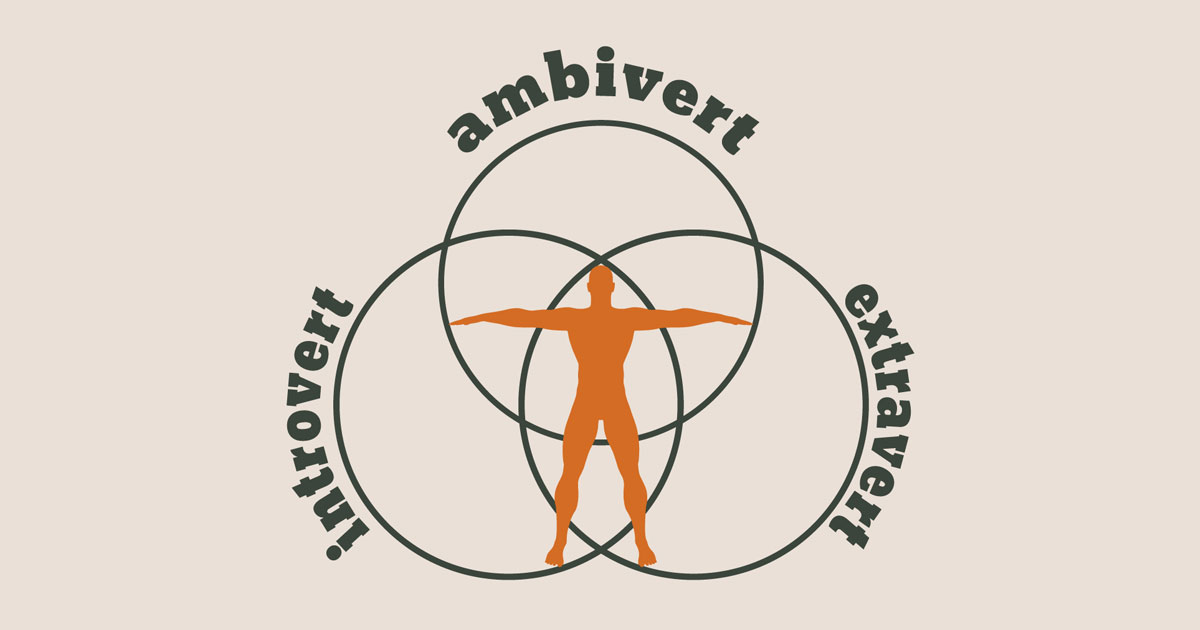One day at work, my coworkers and I were discussing personality traits. I told the group that I didn’t seem to fit neatly into either the introvert category or the extrovert category. One coworker, a professional counselor, said, “You’re an ambivert.”
Ambivert?
I learned a new word that day and immediately began researching. I discovered that, happily, I’m not the only ambivert on the planet. In fact, it’s quite the opposite. Experts say that most of us—68%—are ambiverts, people who have a combination of introverted and extroverted traits. We’re the middle-of-the-road category between the pure introverts and extroverts among us. Since that day, the more I have learned about the traits of ambiverts, the more I recognize myself.
Barry Smith, who directs the Laboratories of Human Psychophysiology at the University of Maryland, described ambiverts for a Today Show web writer. He told her, “At a party, an ambivert engages in boisterous conversation, fluttering from person to person all night, much like the extroverts at the gathering. But that same ambivert also enjoys dinner and a movie alone. Ambiverts act like extroverts in social situations and introverts when alone.” He said, “Ambiverts are more strongly influenced by situational factors. I think a big advantage here is that this person is comfortable in a much wider range of situations.”
Ambiverts act like extroverts in social situations and introverts when alone.
The social and situational flexibility of ambiverts doesn’t mean that being an ambivert is any better or any worse than being an introvert or an extrovert; it’s just different. All people fall somewhere along the introversion/extroversion continuum, and we ambiverts land squarely in the middle of it, blessed with a knack for moving in either direction as needed. If there are two words that describe the typical ambivert, they have to be the words “balance” and “flexibility.”
It is thought that individuals’ tendencies toward introversion or extroversion are largely “hard-wired” into our genetic makeup. For ambiverts, however, the degree to which we display extroversion or introversion varies with the social context where we find ourselves and how comfortable we feel in that situation. For example, ambiverts might be talkative and outgoing at a backyard barbeque or a night out with friends, but not speak a word at a workplace meeting where they feel intimidated in the presence of more experienced coworkers. One expert calls this “situational introversion.”
The “it depends” variability of ambiverts is evident in our decision making as well. While extroverts predictably take more risks, and introverts like to play it safe, ambiverts weave back and forth, sometimes acting on impulse and other times moving with caution.
Because we ambiverts can be both outgoing and reflective, we are especially well-suited for certain occupations. For example, the best salespeople are not extroverts, as you might expect, but ambiverts. Researcher Adam Grant of the University of Pennsylvania’s Wharton School of Management reviewed three months of sales records for more than 300 professional salespeople. He found that the ambiverts brought in 24% more revenue than the introverts, and 32% more than the extroverts. Ambiverts apparently excel at sales because they have an innate sense of when to talk and when to listen. That is, they know when to make the pitch and when to push the pause button.
Typically, ambiverts are:
- Equally productive whether working solo or with a team
- Able to develop close friendships with both introverts and extroverts
- Sometimes indecisive due to wanting to both speed things up and slow things down
- Very flexible and adaptable
- In relationships, a partner who is both playful and deep
So, how about you? Are you an Introvert, an extrovert, or an ambivert? If you are having trouble deciding, and your friends aren’t sure either, that’s a clue in itself! Take a look at the chart below. If both sides describe you in certain circumstances, you, too, could be an ambivert!
| Extrovert | Ambivert | Introvert |
| Energized by people | <——> | Energized by solitude |
| Tend to talk more than listen | <——> | Tend to listen more than talk |
| Many friends, less deep bonds | <——> | Fewer friends, deeper bonds |
| Easily distracted | <——> | Can sustain deep focus for a long time |
| Make decisions quickly | <——> | Take their time deciding |
| Love attention | <——> | Don’t care about attention |
| More comfortable with change | <——> | More resistant to change |






















